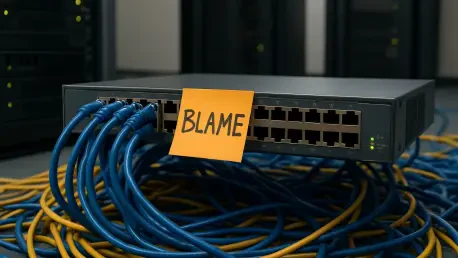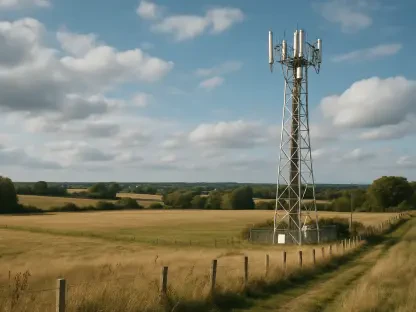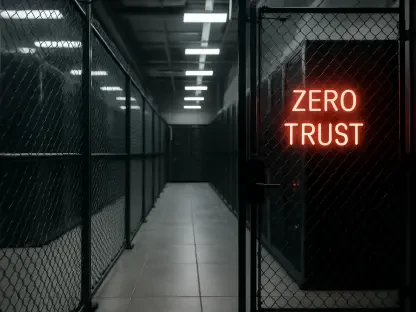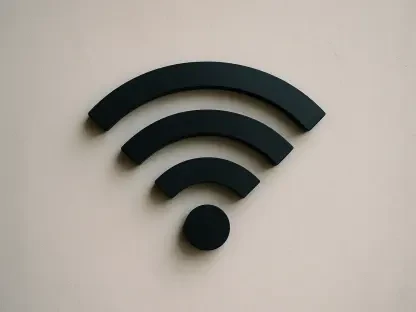Introduction to a Persistent IT Challenge
Imagine a bustling office environment where a critical application suddenly freezes during a high-stakes presentation, halting progress and prompting frustrated murmurs among the team, and almost instinctively, someone mutters, “It must be the network,” as heads nod in agreement, even before any diagnostic steps are taken. This knee-jerk reaction to blame the network for IT disruptions has become a pervasive trend in modern workplace culture, reflecting a deeper misunderstanding of technology’s interconnected nature. Despite significant advancements in network reliability, this tendency persists, often overshadowing other potential culprits. This analysis delves into the roots of network blame, examines the stability of contemporary systems, incorporates expert viewpoints, explores future implications, and advocates for improved troubleshooting practices to address this ongoing issue.
Unpacking the Network Blame Phenomenon
Cultural and Psychological Drivers of Misplaced Fault
The habit of pointing fingers at the network for IT issues is deeply ingrained in both users and technical staff, often surfacing as the first explanation for any glitch. Surveys from IT support platforms indicate that a substantial percentage of initial trouble tickets cite network problems, even when subsequent analysis reveals other causes. This reflex is tied to a human inclination to simplify complex problems, as the network—often invisible and poorly understood—serves as an easy target for frustration.
Beyond raw data, psychological factors play a significant role in perpetuating this trend. The complexity of IT ecosystems can overwhelm non-specialists, leading them to latch onto a familiar scapegoat rather than grappling with intricate details. This behavior aligns with broader tendencies to favor straightforward answers over nuanced investigations, reinforcing the network’s role as the default culprit in many scenarios.
Tangible Cases of Misattribution
Real-world examples highlight how often network blame is misplaced. Consider a scenario where a colleague insists the network is down while actively communicating via a connected platform like Microsoft Teams, clearly demonstrating that connectivity remains intact. Such contradictions reveal a gap between perception and reality, driven by assumptions rather than evidence.
Another common instance involves sluggish application performance or failed login attempts, where users quickly attribute delays to network issues without considering alternative explanations. These situations often stem from a lack of awareness about other system components, resulting in unnecessary escalations to network teams who must then disprove the initial hypothesis. This pattern of misattribution wastes time and resources, underscoring the need for broader education on IT interdependencies.
Examining Modern Network Stability
Technological Progress in Network Dependability
Today’s network systems stand as a testament to engineering advancements, boasting impressive uptime in well-managed environments thanks to innovations like redundant architectures and sophisticated monitoring tools. Industry reports suggest that network availability often exceeds 99.9% in enterprise settings, a stark contrast to earlier eras of frequent outages. These developments have drastically reduced the likelihood of genuine network failures, shifting attention to other areas of the IT stack.
Such reliability stems from proactive measures like automatic failover mechanisms and dynamic routing protocols, which mitigate disruptions before they impact users. As a result, when issues arise, the network is rarely the root cause, prompting a reevaluation of where blame should be directed. This reality challenges long-held assumptions and calls for a more discerning approach to problem identification.
Frequent Non-Network Sources of Disruption
Despite the network’s robustness, it remains a convenient scapegoat for a variety of IT hiccups unrelated to connectivity. Application bugs, server overloads, and user errors frequently account for disruptions, yet these causes are often overlooked in initial assessments. The network’s role as a central connector across systems amplifies its perceived involvement, even when evidence points elsewhere.
For instance, a slow database response might mimic network latency to an untrained eye, while a misconfigured endpoint could disrupt access without implicating connectivity. These examples illustrate how the network’s visibility as a unifying element overshadows other components, perpetuating a cycle of misdiagnosis that delays effective solutions. Recognizing these alternative culprits is essential for accurate troubleshooting.
Expert Perspectives on Network Blame
Insights from a Network Engineering Veteran
Emmanuel Mordi, a respected network engineer and thought leader, offers a compelling critique of the blame culture surrounding networks. He emphasizes the importance of evidence-based troubleshooting, arguing that assumptions about network faults often derail problem-solving efforts. His perspective sheds light on the need to look beyond surface-level symptoms to uncover true causes.
Mordi also voices the frustration felt by network teams who repeatedly defend their systems against unfounded accusations. He highlights how this dynamic strains interdepartmental collaboration, as resources are diverted to disproving false claims rather than addressing actual issues. His call for systematic diagnosis resonates as a practical step toward alleviating these tensions.
Advocating for Deeper Understanding
Furthering his stance, Mordi advocates for increased awareness of IT complexity among users and staff alike. He stresses that while network issues can occur, they are far less common than perceived, especially in environments equipped with modern tools. This insight underscores the value of training and communication in reshaping outdated perceptions.
His vision extends to fostering a culture where data drives decisions, encouraging teams to consult logs, metrics, and historical patterns before assigning fault. By promoting such rigor, Mordi aims to reduce wasted effort and enhance resolution times, ultimately benefiting the broader IT ecosystem with a more informed approach.
Future Outlook for Network Blame in IT Culture
Evolving Complexities in Technology Landscapes
As IT environments grow more intricate with the integration of cloud services, IoT devices, and hybrid setups, the trend of network blame may intensify without intervention. These advancements, while powerful, introduce additional layers of dependency that can obscure the source of disruptions. Without updated diagnostic frameworks, the network could remain an easy target for misdirected frustration.
Emerging technologies also present unique challenges, as their interconnected nature amplifies the ripple effects of any failure. This complexity risks entrenching outdated blame habits if education and tools fail to evolve alongside systems. Addressing this requires proactive efforts to align understanding with technological progress.
Potential for Improved Practices and Outcomes
On a positive note, shifting toward evidence-driven troubleshooting holds promise for transforming IT culture. Such an approach could accelerate issue resolution, minimize finger-pointing, and strengthen collaboration across teams. By prioritizing root cause analysis over assumptions, organizations stand to gain efficiency and trust in their technical operations.
However, realizing these benefits hinges on overcoming barriers like resistance to change and gaps in technical literacy. Investing in training programs and accessible diagnostic resources will be critical to dismantling the network blame cycle. This forward momentum could redefine how challenges are tackled, paving the way for innovation in problem-solving methodologies.
Reflections and Next Steps in IT Problem-Solving
Looking back, the exploration of network blame uncovered a cultural habit rooted in misunderstanding, contrasted sharply against the proven stability of modern networks. Experts lent valuable insights into the necessity of systematic diagnosis, while future considerations painted a picture of both challenges and opportunities amid growing IT complexity. This journey illuminated the inefficiencies tied to misplaced fault and the urgent need for change.
Moving ahead, the focus shifts to actionable strategies that could reshape troubleshooting norms. Encouraging IT professionals and users to embrace evidence-based methods emerges as a cornerstone for progress. By fostering curiosity over assumption, the IT community could build a more collaborative and effective environment, ensuring that solutions, not scapegoats, take center stage in addressing disruptions.









